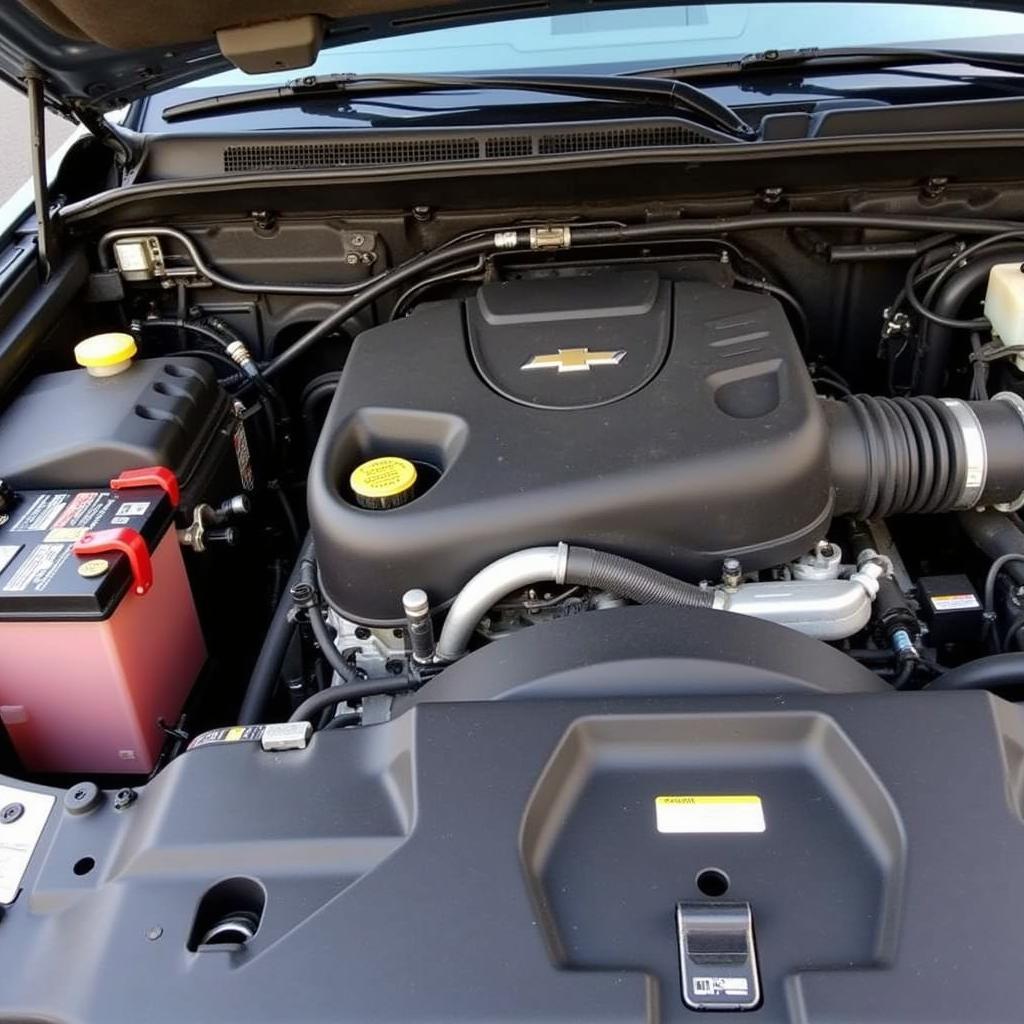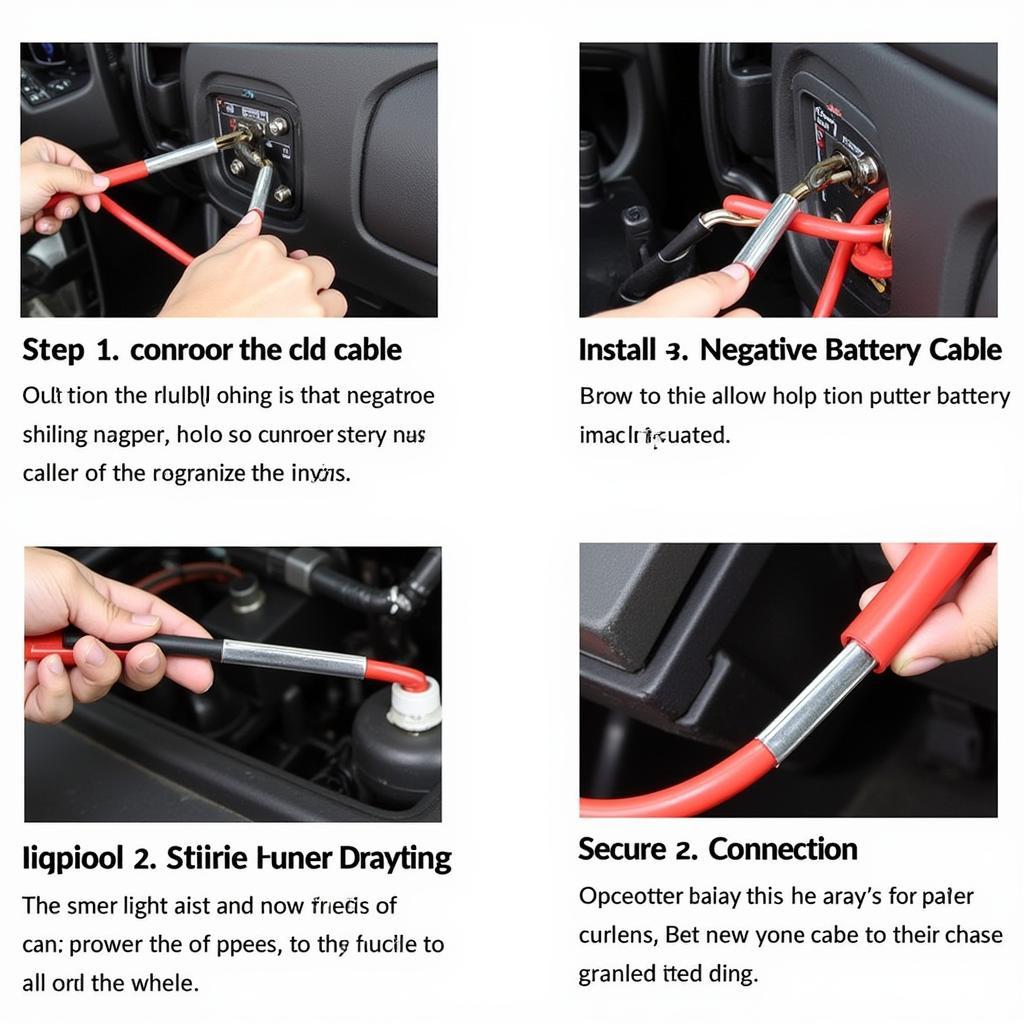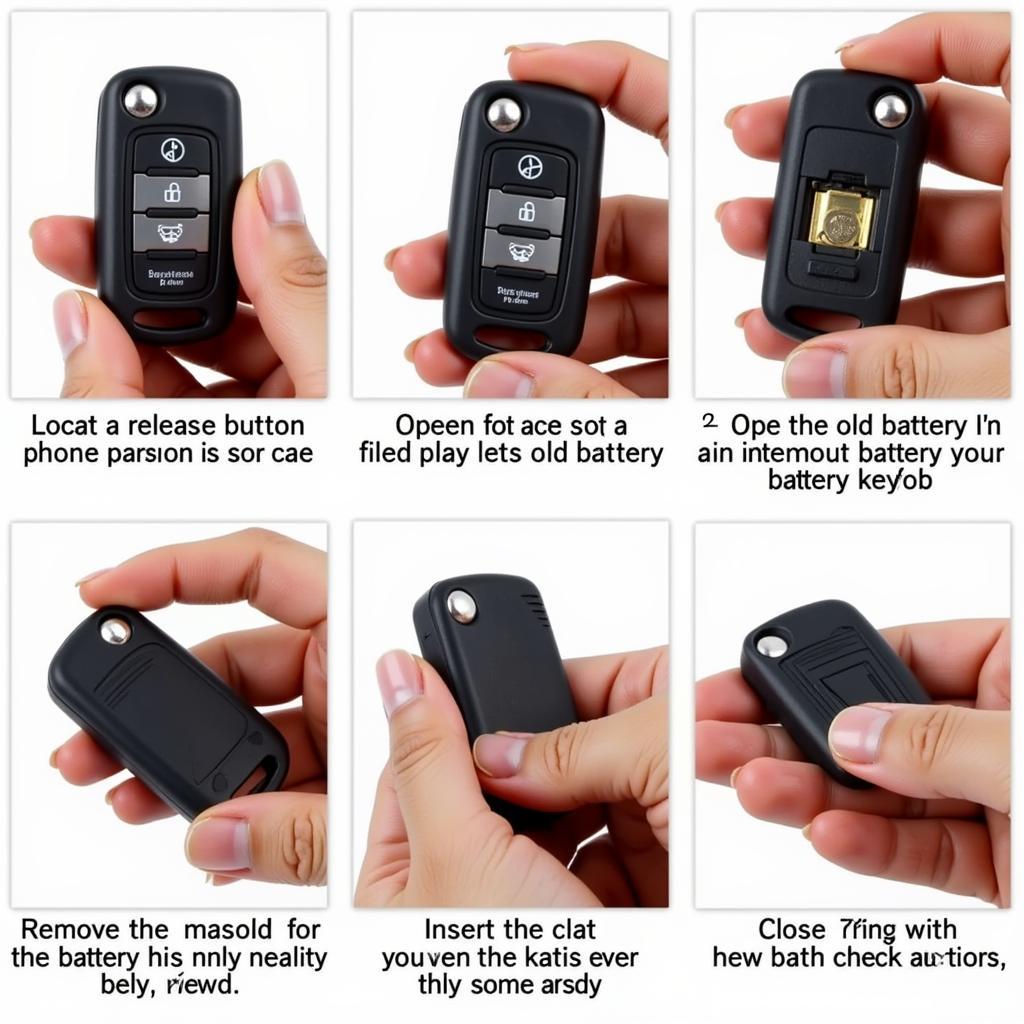2014 Silverado negative battery cable problems can be a real headache, leaving you stranded and frustrated. This guide dives deep into the common issues, diagnostic procedures, and solutions for negative battery cable problems on your 2014 Chevy Silverado. From loose connections to corrosion and even electrical gremlins, we’ll cover everything you need to know to get your truck back on the road.
Understanding the Importance of the Negative Battery Cable
The negative battery cable is more than just a wire; it’s the grounding path for your entire electrical system. A faulty negative cable can lead to a range of issues, from dimming headlights and slow starting to a complete no-start condition. It’s crucial to address any negative battery cable problems promptly to avoid further complications and ensure the reliable operation of your Silverado.
 2014 Silverado Negative Battery Cable Location
2014 Silverado Negative Battery Cable Location
Common 2014 Silverado Negative Battery Cable Problems
Several issues can plague the negative battery cable on a 2014 Silverado. Loose connections are a frequent culprit, causing intermittent electrical problems. Corrosion, often due to exposure to moisture and road salt, can disrupt the flow of electricity. In some cases, the cable itself can become damaged due to wear and tear or physical impact.
Diagnosing Negative Battery Cable Issues
Diagnosing negative battery cable problems starts with a visual inspection. Look for signs of corrosion, fraying, or damage to the cable and its connections. Check the terminals for tightness and cleanliness. A multimeter can be used to test the voltage drop across the cable. A significant voltage drop indicates a problem with the cable or connections.
“A simple visual inspection can often reveal the source of the problem,” says automotive electrical expert, Robert Hernandez. “Check for loose connections and corrosion before moving on to more complex diagnostic procedures.”
How to Fix Negative Battery Cable Problems
Depending on the issue, fixing negative battery cable problems can range from a simple cleaning to a complete cable replacement. For loose connections, tighten the terminal bolts using the correct torque specifications. Corroded terminals can be cleaned with a wire brush and a baking soda and water solution. If the cable is damaged, replacement is the best course of action.
Replacing the Negative Battery Cable
Replacing the negative battery cable is a straightforward process. First, disconnect the negative cable from the battery terminal. Then, locate and disconnect the other end of the cable, typically attached to the engine block or frame. Install the new cable, ensuring it’s routed correctly and securely fastened.
“When replacing the cable, make sure to use a high-quality replacement that meets or exceeds the original equipment specifications,” advises Hernandez. “This will ensure long-lasting performance and reliability.”
 2014 Silverado Negative Battery Cable Replacement
2014 Silverado Negative Battery Cable Replacement
If you’re experiencing issues with your anti-theft system, check out this guide on how to reset anti theft system chevy silverado 2014. Sometimes, electrical issues can trigger the anti-theft system.
Preventing Future Negative Battery Cable Problems
Regular maintenance can help prevent future negative battery cable problems. Periodically inspect the cable and connections for signs of corrosion or damage. Applying a dielectric grease to the terminals can help protect them from corrosion. Keeping the battery clean and dry can also prolong the life of the cable and terminals.
If you need to reset your Silverado’s anti-theft system, you can find helpful information in this guide on how to reset anti theft system chevy silverado.
Conclusion
2014 Silverado negative battery cable problems can be easily diagnosed and resolved with a little know-how. By understanding the common issues and following the steps outlined in this guide, you can keep your Silverado running smoothly and avoid costly repairs. Regular maintenance and preventative measures can further minimize the risk of future problems.
FAQ
-
What are the signs of a bad negative battery cable? Dimming headlights, slow starting, clicking sounds when turning the key, and a complete no-start are common signs.
-
How do I test a negative battery cable? Use a multimeter to measure the voltage drop across the cable. A significant drop indicates a problem.
-
Can I clean a corroded negative battery cable terminal? Yes, use a wire brush and a baking soda and water solution to clean corroded terminals.
-
How often should I inspect my negative battery cable? Inspect the cable and connections every few months, especially during harsh weather conditions.
-
What can I do to prevent negative battery cable corrosion? Apply dielectric grease to the terminals and keep the battery clean and dry.
-
Where can I find a replacement negative battery cable for my 2014 Silverado? Auto parts stores and online retailers carry replacement cables.
-
Is it difficult to replace a negative battery cable myself? No, it’s a relatively simple process that most DIYers can handle.


